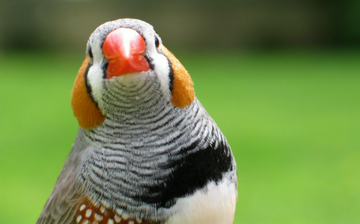Sex-linked supergene controls sperm size, shape and swimming speed in birds

The size and swimming speed of sperm are controlled by a single supergene in birds, according to a new study by the University of Sheffield.
Sperm competition is an important selective force in many organisms but the relationship between sperm shape, its ability to move and successful fertilisation is only partly understood.
Previous studies have shown that sperm shape and speed are inherited; fathers with long, fast sperm have sons with long, fast sperm. However, it was not known which genes were responsible for sperm characteristics being passed from one generation to the next.
In a new study, published today in Nature Ecology and Evolution, researchers at the University of Sheffield have used zebra finches as a model system to unravel the genetics of sperm.
The new research shows that the shape, size and swimming speed of sperm is due to something called a supergene. A supergene is a number of genes that are next to each other on a chromosome and inherited together as one unit. The idea that supergenes were important was first proposed in the 1930s, but evidence for them was lacking until recently.
Professor Jon Slate, from the Department of Animal and Plant Sciences at the University of Sheffield, said: "Like humans, birds have sex chromosomes; males have two Z chromosomes and females have a Z and a W. The zebra finch supergene that affects sperm is on the Z chromosome and has arisen because parts of the Z chromosome have been flipped around. Three different orientations of the Z chromosome (named A, B and C) now exist and they have been evolving independently of one another for thousands, possibly millions, of years.
"Because males have two copies of the Z chromosome, they can either have two identical (e.g. AA) or two different (e.g. AB) copies of the supergene. The males with two different versions of the supergene have the best sperm with long midpieces, long tails, fast swimming speed, and a higher fertilisation success in sperm competition experiments. Geneticists call this phenomenon heterozygote advantage."
Scientists believe that a better understanding of how the shape of sperm and size influences fertilisation success in non-human animals such as the zebra finch may point us in new directions for investigation in human fertility research.
The new study is published back-to-back with another paper by Wolfgang Fortsmeier and colleagues at the Max Plank Institute for Ornithology.
More information: Kang-Wook Kim et al. A sex-linked supergene controls sperm morphology and swimming speed in a songbird, Nature Ecology & Evolution (2017). DOI: 10.1038/s41559-017-0235-2
Journal information: Nature Ecology & Evolution
Provided by University of Sheffield





















